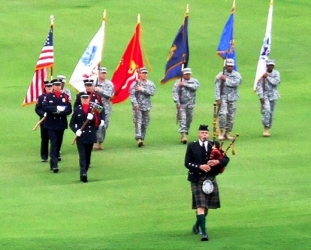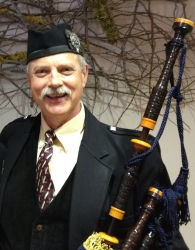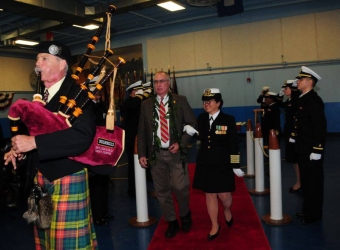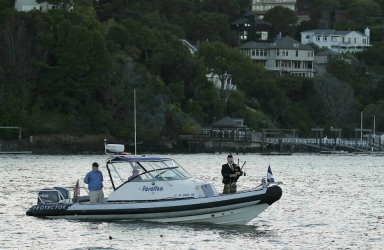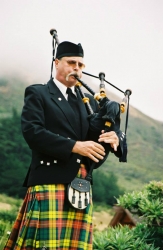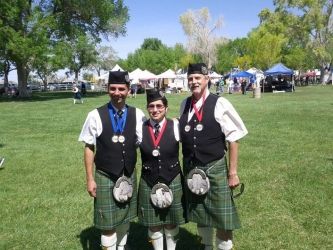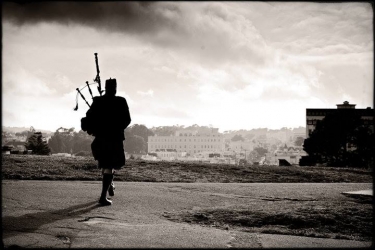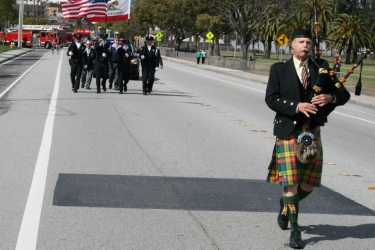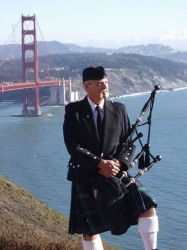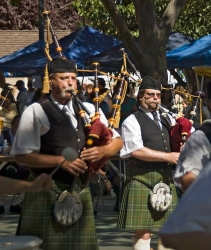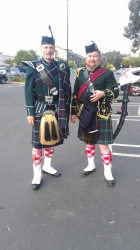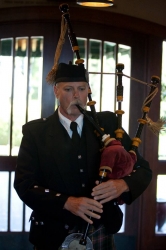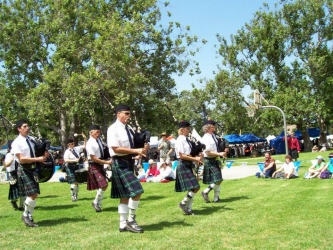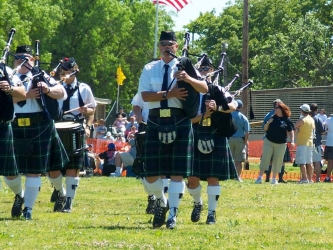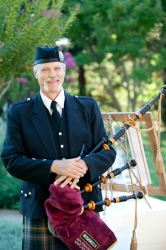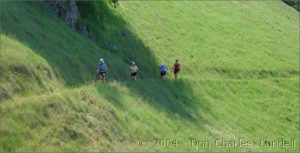
This is Saturday, May 6. I was up at 3AM, on site at 4:30 and performing at 5:20. I should make it home by 7. For the third year “running,” I perform for the Miwok 100K ultramarathon, my most consistently challenging and always very rewarding performance.
Not only is it dark, it is cold, the kind that penetrates deep. I have two thermal underlayers on, hand warmers in my pockets, and for the first time, a balaclava on my head. It is 43 degrees with a 20 knot dry wind blowing from inland. This is no parking lot, public road, or bike path. It’s a half mile off the road near the Pantoll ranger station on Mt. Tamalpais, Marin County, California. I stand by a sharp crook in the Dipsea trail at the top of a grade know as “cardiac,” and that says it all. Runners start at 5AM in Stinson Beach, 3 miles away and 1,500 feet lower. The frontrunners arrive in less than 25 minutes. I see headlamps bobbing in the distance as the sky begins to lighten to the west. I play quick marches, jigs, reels, hornpipes, everything upbeat as they make the turn to head south along the ridge.
After only 3 miles, the 400 runners are strung out for a half an hour. They all deserve the inspiration and lift of powerful pipe tunes so I try to play continuously, taking occasional brief breaks. There is a car 50 feet away with its heater running at max. I can go there if I must. After 15 minutes I can feel my fingers beginning to numb. After 20, I can’t feel the holes in my chanter. I play on, trusting muscle memory to find and cover those holes. Finally, I cannot hit a note. I stop playing, stuff my hands into the jacket, hold the hand warmers for a minute. “Play!” a runner shouts. “Run!” I reply. The warmers do the trick and I coax a few more minutes of music from my stiff, brittle-skinned fingers.
Most runners give me a high sign, a wave, or a cheer. Many point their devices at me and take pics or videos. Some actually approach and take selfies with me. Two race officials take continuous video with GoPros.

Normally, I perform in the proper uniform. This unusually dry air is colder and I wear a balaclava instead of a glengarry. It was foggy in 2015 and 2016. The dampness overwhelmed my moisture control. Reeds malfunctioned and finally shut down as the last runners went by. This year they behave better, but the dry air goes to the bone and my fingers become the weak link.
I love this gig. It is wild, close to the edge geographically, physically, and people-wise. These are the most hard-core runners I have seen. The fastest covered the 3-mile, 1,500-foot uphill first leg quicker than you could imagine, and still more than 90 km. to go after that. They’ll be at it all day.
Race organizer Tia B. and her assistant Ken (my handler for the event) talk afterward about the challenges of staging such an event. FSNB (Full speed, no brakes) is Tia’s new acronym describing the last few days before the race. “Put it in the Urban Dictionary,” I suggest. “There’s an idea. Maybe I will.” FSNB, the perfect adjective for this experience from every point of view – organizers, runners, the piper.
Thank you, Tia for hiring me once again, and Ken, for your reliable, compassionate support on the trail as well as your good conversation on a dark, cold mountain top. I hope to have the privilege of being here for you in years to come.

